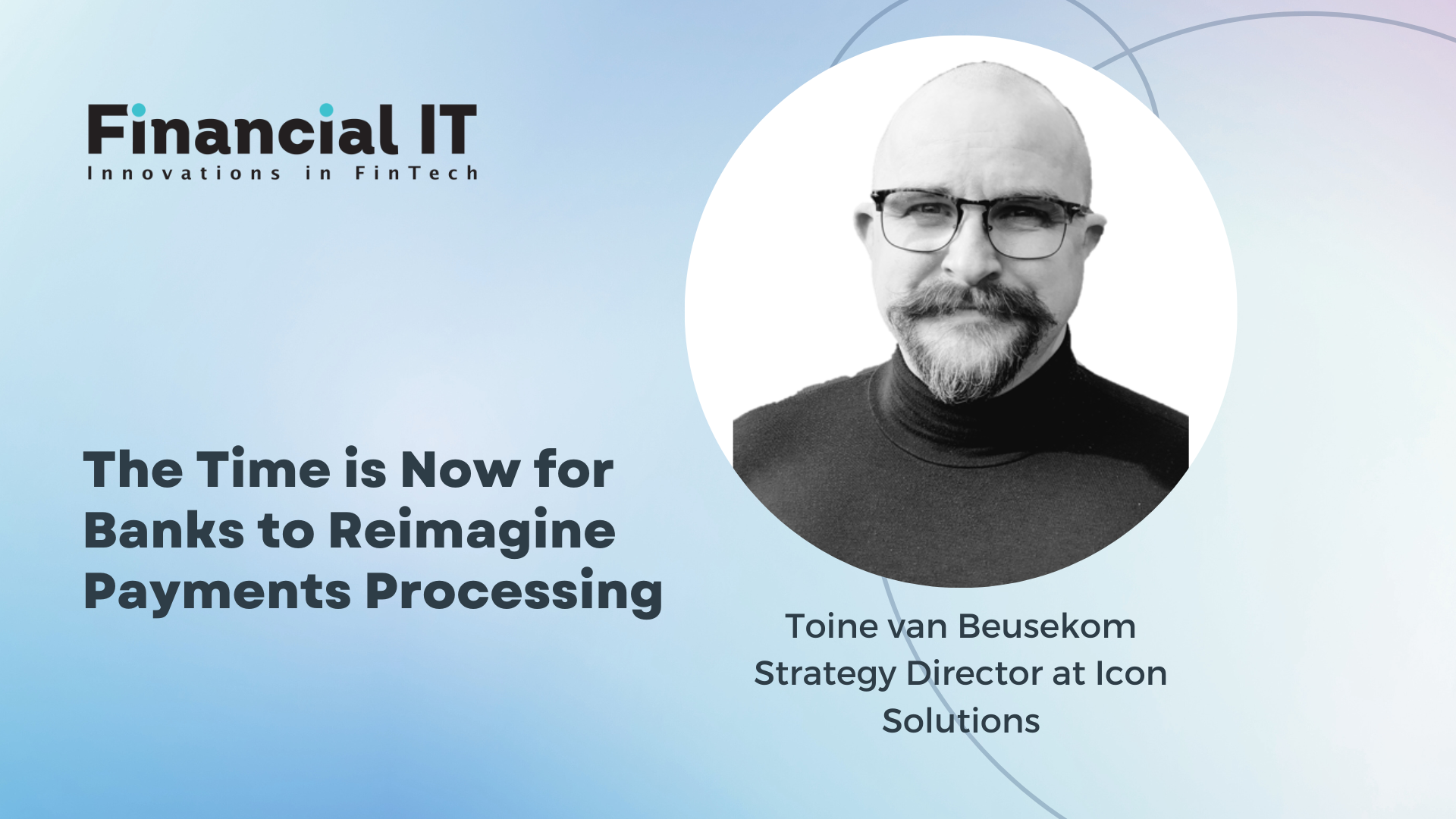The Time is Now for Banks to Reimagine Payments Processing

- Toine van Beusekom, Strategy Director at Icon Solutions
- 31.08.2023 11:00 am #banking #payments
The rapid convergence of emerging technologies and evolving business models is presenting banks with systemic and operational challenges that are proving profoundly difficult to navigate.
Many banks are simply slow in responding to new competitors, increasing regulatory and scheme requirements, and ever-evolving customer demand for value-added services. They struggle to really innovate, stemming from the unsustainably high costs of maintaining outdated IT systems and infrastructure, focusing excessive resource on the short-term need to ensure sufficient resiliency and compliance.
Margins on payments are under pressure
The payments processing model for account-to-account (A2A) payments is under particular strain. Payments are widely seen as a commodity product and banks are consistently reporting that margins are becoming more difficult to maintain, with most banks viewing payments as a cost centre.
To realise the business differentiation opportunities that unlock greater revenue, however, banks must ensure that their architecture and technology support key payments processing requirements. This includes adapting to huge volumes of low-value payments, as well as the need for speed in an age of real-time, always-on digital economies.
Another increasingly fundamental requirement for banks is understanding the realities of the underlying payments processing business models and defining their strategy accordingly. To end the vicious cycle of rising costs and decreasing margins, banks need to think differently about payment processing and start taking control.
Moving costs to revenue
It is evident that certain parts of the payment value chain such as execution and clearing and settlement are now highly commoditised with limited potential for differentiation (aside from when things go wrong, that is). In contrast, areas such as payment initiation management offer abundant opportunity for innovation for those with vision and a clear technology transformation strategy.
To realise these opportunities, banks must appraise the maturity of their payments processing ecosystem and understand whether they are operating Payment Processing as a Legacy, Payment Processing as a Commodity or Payment Processing as a Business.
With Payment Processing as a Legacy, the all-consuming focus on fighting fires and preventing systems from falling over prohibits the consideration of important questions. Namely – do we need to do this? For some banks, the answer is ‘no’ and the best option is to exit and outsource parts of, or all, the payments business. Other banks have a choice between either setting up payments to run as a cost centre (Payment Processing as a Commodity) or a profit centre (Payment Processing as a Business).
With Payment Processing as a Commodity, banks focus on payments modernisation initiatives to promote efficiency, reliability and straight through processing (STP) to lower the cost base. In comparison, Payment Processing as a Business is predicated on delivering enhanced services to existing and emerging client segments to drive revenue and make money on payments.
This places the onus on banks to understand how they can approach and deliver these new services. One example is combining standard A2A payments with credit services, insurance and dispute handling to offer a comparable offering to card payments. Banks already deliver the individual components, but what needs to happen at an architectural, technical and strategic level to deliver as a bundled product?
Is payments modernisation enough?
For Payment Processing as a Commodity, modernising through the adoption of new technologies is an absolute minimum requirement for keeping the lights on, meeting regulatory and scheme requirements, and operating efficiently and cost-effectively.
But it is important to recognise that this will only take banks so far.
For banks moving towards Payments Processing as a Business, transformation underpins the ability to offer differentiated services and products. The profound impact on the architecture cannot be underestimated, and modernising legacy environments simply will not deliver the requisite functionality and performance.
This requires banks to think holistically around the whole business model and look to the long term in respect of how they can control their costs, build and risks. An approach to transformation that balances technology solutions, strategy and services can deliver the flexibility needed to promote the innovation that will, ultimately, help to reimagine payments processing.
To find out more, watch this webinar where Toine and Amit Bhute, Global Head – BFS Practice, Virtusa, explore how banks can capitalise on cost-effective solutions for payment modernisation and transformation.






















